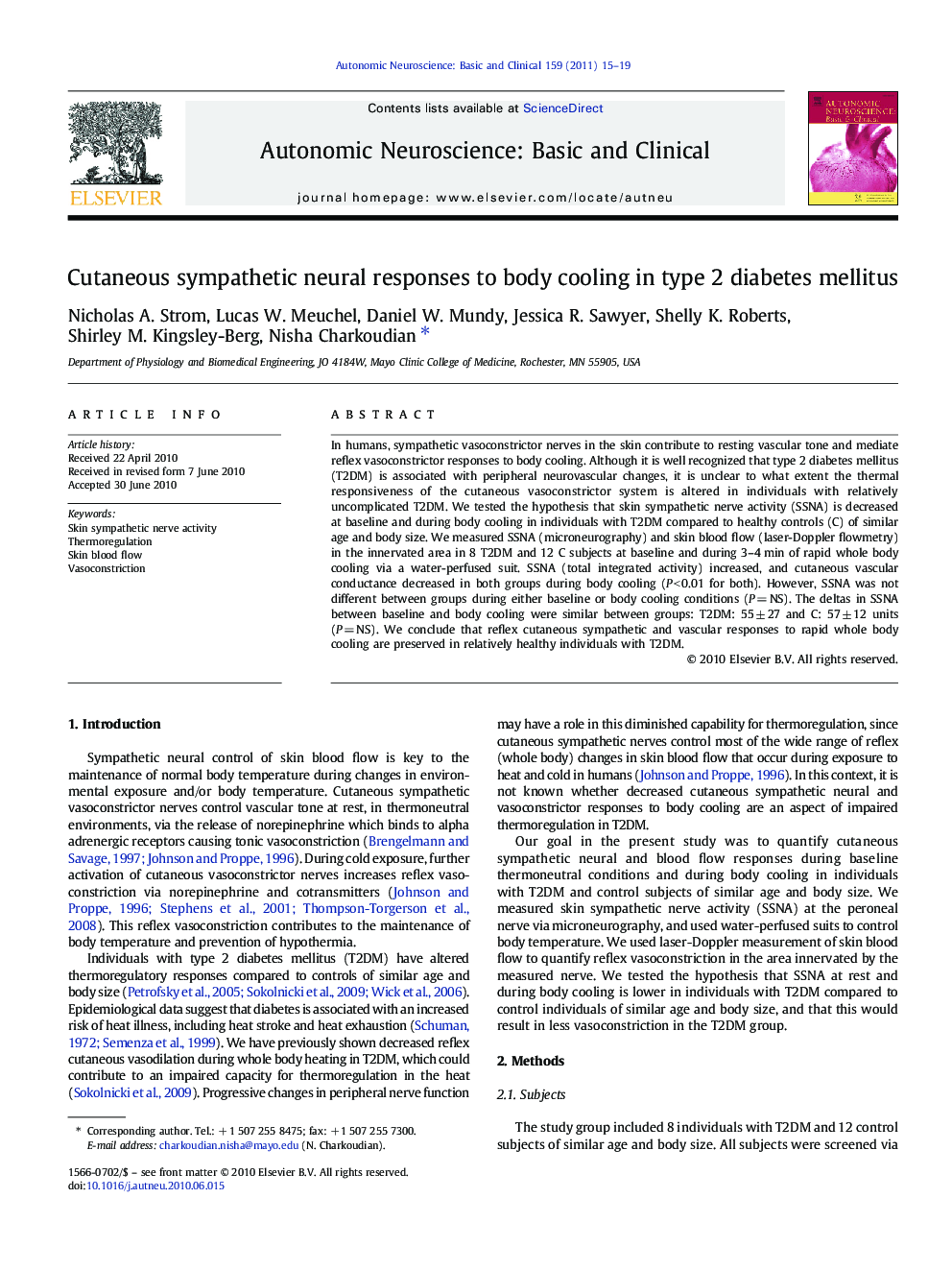| Article ID | Journal | Published Year | Pages | File Type |
|---|---|---|---|---|
| 3035021 | Autonomic Neuroscience | 2011 | 5 Pages |
In humans, sympathetic vasoconstrictor nerves in the skin contribute to resting vascular tone and mediate reflex vasoconstrictor responses to body cooling. Although it is well recognized that type 2 diabetes mellitus (T2DM) is associated with peripheral neurovascular changes, it is unclear to what extent the thermal responsiveness of the cutaneous vasoconstrictor system is altered in individuals with relatively uncomplicated T2DM. We tested the hypothesis that skin sympathetic nerve activity (SSNA) is decreased at baseline and during body cooling in individuals with T2DM compared to healthy controls (C) of similar age and body size. We measured SSNA (microneurography) and skin blood flow (laser-Doppler flowmetry) in the innervated area in 8 T2DM and 12 C subjects at baseline and during 3–4 min of rapid whole body cooling via a water-perfused suit. SSNA (total integrated activity) increased, and cutaneous vascular conductance decreased in both groups during body cooling (P < 0.01 for both). However, SSNA was not different between groups during either baseline or body cooling conditions (P = NS). The deltas in SSNA between baseline and body cooling were similar between groups: T2DM: 55 ± 27 and C: 57 ± 12 units (P = NS). We conclude that reflex cutaneous sympathetic and vascular responses to rapid whole body cooling are preserved in relatively healthy individuals with T2DM.
